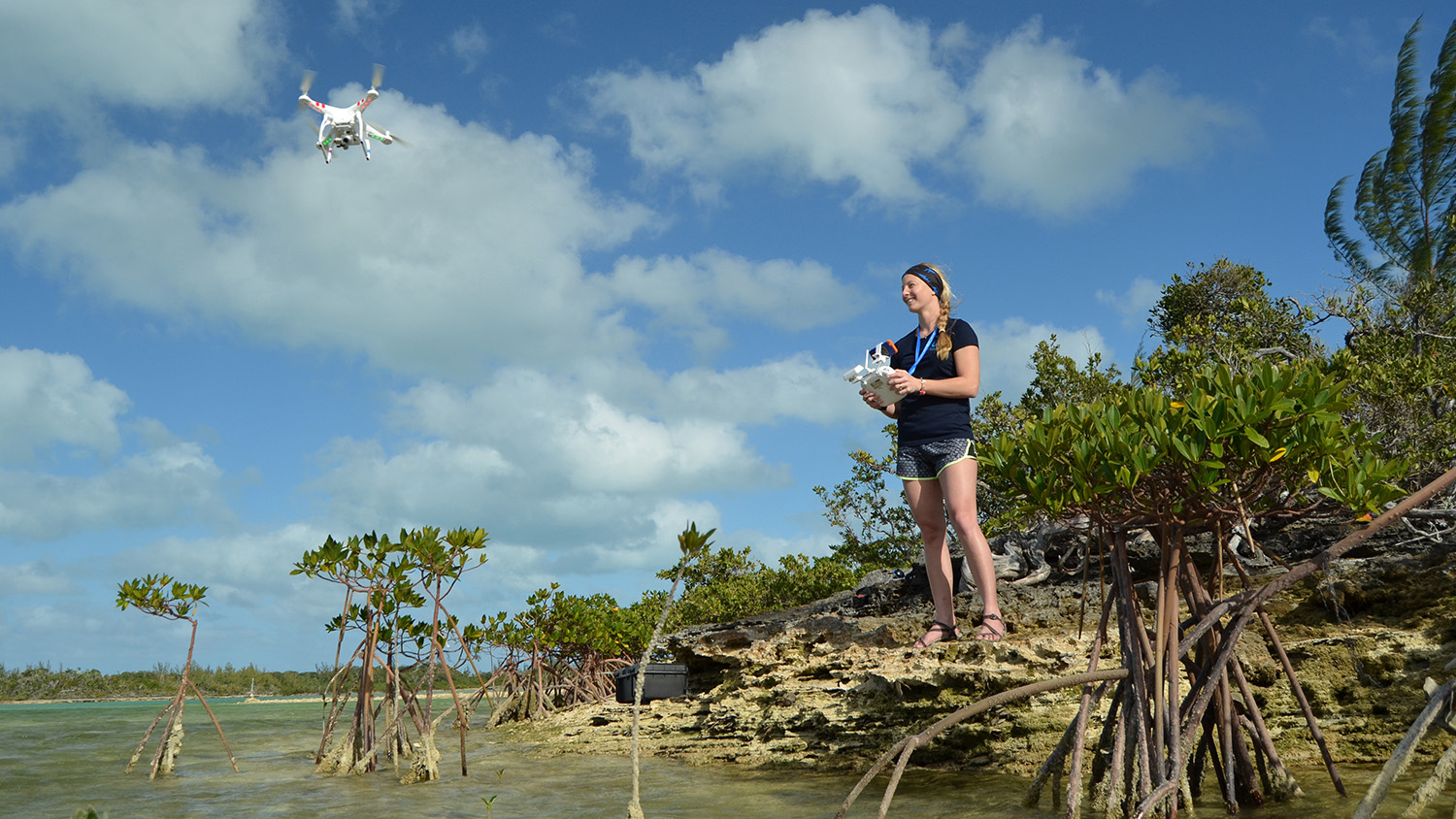Drones Offer Ability to Find, ID and Count Marine Megafauna

For Immediate Release
New research from North Carolina State University demonstrates that consumer-grade drones are effective tools for monitoring marine species across multiple sites in the wild. The work shows that the technology can be a valuable platform for scientists and conservationists interested in studying populations of sharks, rays, sea turtles and other marine megafauna.

“We found that drones can be used to count and make species-level identifications of marine species, particularly in shallow marine environments,” says Enie Hensel, a Ph.D. candidate at NC State and first author of a paper on the work.
“Demonstrating the viability of drones for this work matters, because these are inexpensive tools for collecting accurate abundance estimates,” Hensel says. “And those estimates are important for both informing the development of conservation efforts and for assessing the effectiveness of those efforts.
“Drone surveys are also a good way to monitor shallow water, megafauna species because they are not intrusive,” Hensel says. “More traditional monitoring methods – such as boat surveys or gill nets – are more invasive, and have the potential to harm individuals or alter their movement patterns.”
Previous studies using drones to monitor marine species have focused on single sites. The recent work from NC State evaluated multiple sites, demonstrating that drones can be used to assess environmental variables that may be responsible for population differences between locations. For example, drones may be used to help target conservation efforts on sites that have the most value in terms of supporting specific species.
The researchers also showed that drones are effective at sites with varying degrees of water clarity.
To assess the effectiveness of the drones, researchers placed fake sharks underwater at two sites with different water clarity. Drone footage allowed researchers to identify all of the decoys at both sites.
“We chose grey shark decoys because they would be the most difficult to spot in these environments, but we were able to spot them all,” Hensel says.
In field testing, researchers were also able to make species-level identifications of lemon, nurse and bonnethead sharks, as well as southern stingrays and spotted eagle rays. The drone footage also allowed researchers to identify sea turtles, though they had difficulty differentiating between hawksbill and green sea turtles.
“One reason we chose these sites, all of which were on Great Abaco Island in The Bahamas, was because The Bahamas are interested in using several of the sites as a pilot for a managed conservation effort,” Hensel says. “Our surveys provide baseline data for marine megafauna abundances within these newly established parks and we show that drones offer a new management tool for the park service of The Bahamas. And, of course, the technology certainly opens doors for us to explore a range of conservation issues.”
The paper, “Using a small, consumer-grade drone to identify and count marine megafauna in shallow habitats,” is published in the Latin American Journal of Aquatic Research. The paper was co-authored by Stephanie Wenclawski, a former undergraduate at NC State; and Craig Layman, a professor of applied ecology at NC State. The work was made possible by support from the Save Our Seas Foundation.
-shipman-
Note to Editors: The study abstract follows.
“Using a small, consumer-grade drone to identify and count marine megafauna in shallow habitats”
Authors: Enie Hensel, Stephanie Wenclawski and Craig A. Layman, North Carolina State University
Published: November 2018, Latin American Journal of Aquatic Research
Abstract: Large-bodied animals, megafauna, are disproportionately threatened and yet, remain relatively difficult to monitor. This is particularly true in the ocean. Consumer-grade drones have high definition imagery and offer a non-invasive way to monitor a subset of marine megafauna, especially those species that spend part of their life near the water’s surface. However, a key question is the extent to which drone imagery data offer reliable abundance estimates due to potential detection restraints, and the ability to compare data from different locations. Here we tested the efficacy of a quadcopter drone to collect megafauna abundance data in multiple shallow-water habitats in the realistic background variation of shoreline development. On Great Abaco Island, The Bahamas we repeated drone surveys in nearshore habitats from June to August 2015 at three paired high and low human population sites. We tested the drone’s detection probability using decoy organisms, and found no effect of water quality or benthic characteristics on detectability. In short, the drones appear to work to monitor these species. We also noted patterns in the occupancy of the species on which we focused. We observed three shark, two ray, and two sea turtle species, finding higher abundances of all species in our low human population sites compared to high human population sites. Our results highlight the ability of consumer-grade drones to estimate the abundance and distribution of large-bodied elasmobranchs and sea turtles in shallow water habitats. Further, our study supports their capability to evaluate issues related to conservation and management of nearshore ecosystems.
- Categories:


